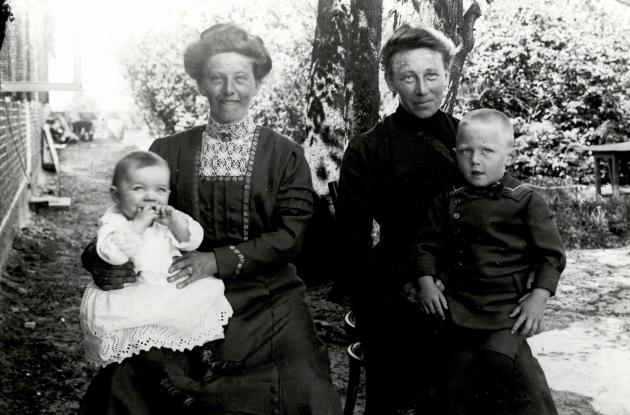Women's fight
We often call our language the mother tongue. In North Schleswig, mothers were crucial in keeping Danish culture alive. They became even more important during World War I.
In the period from 1864 and up to the Reunification, many measures were introduced to make the Danish-minded people of Schleswig more German. In the struggle to preserve their culture, bread with butter and fruitcake could be the women's weapon, but they also used more traditional democratic methods.
In the decades before the Reunification, women in both Denmark and Germany fought to get the right to vote. In those years, women became a more distinct part of society and the societal debate. North of Kongeåen, their voices were used to speak for the people of Southern Jutland, while women in Southern Jutland organized social and political work that supported the fight for their Danish identity.
Perhaps they did so because 30,000 Danish-minded Southern Jutland men, against the wishes of most of the South Jutlanders, were enlisted in the German army fighting in the First World War. The women were left behind to deal with the loss and everyday problems. Maybe being Danish was something to cling to?
Jutta Kloppenborg-Skrumsager
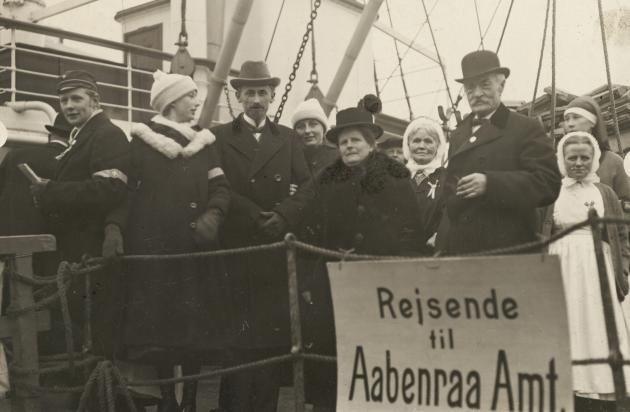
Photo: Ophav ukendt
Jutta Kloppenborg-Skrumsager was born into a family from Southern Jutland who fought for the Danish cause. Her father, grandfather and brothers were all part of the national movement. For Jutta, World War I in particular was the start of a lifelong commitment. She had trained as a physiotherapist in Copenhagen and had built a home with her husband, book printer Andreas Madsen. In the autumn of 1914, the first Danish-minded deserters began to cross the border from Germany. The men from Southern Jutland had been called up for World War I, but not everyone could see themselves as soldiers for the emperor. Jutta welcomed them with open arms.
After the armistice in November 1918, she began holding lectures and campaigning for reunification, and when the vote became a reality, she organized the so-called voting ships. Many Southern Jutlanders like herself had moved to Denmark since 1864. Most were eligible to vote if they simply showed up at the polling stations, so Jutta arranged for the transport on the ships Dronning Maud and Dannebrog.
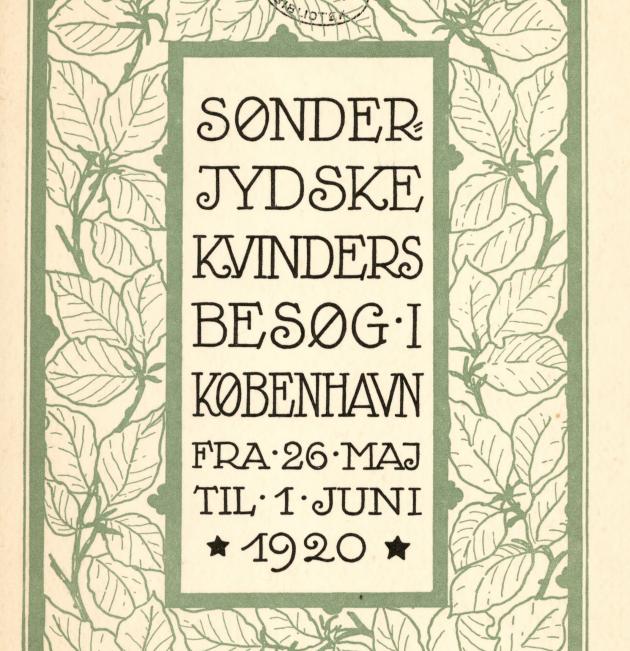
Photo: Danske Kvinders Nationalraad
The North Schleswig Women's Association
In 1907, a group of women founded the "North Schleswig Women's Association". It was actually an illegal act, for the Prussian constitution, which applied to North Schleswig, did not allow women to form associations. It was not until 1910 that the association was legalised. The association was popularly called "Dyneforeningen" (in English: "the duvet association"). It may sound a little strange, but it was because young South Jutlanders who wanted to go to folk high school had to bring a duvet and often a bed too. The women in the "North Schleswig Women's Association" made a great effort to provide duvets and beds that could be lent to poor Danes. The association became a Danish rallying point, and at the Reunification in 1920 it had 7000 members.
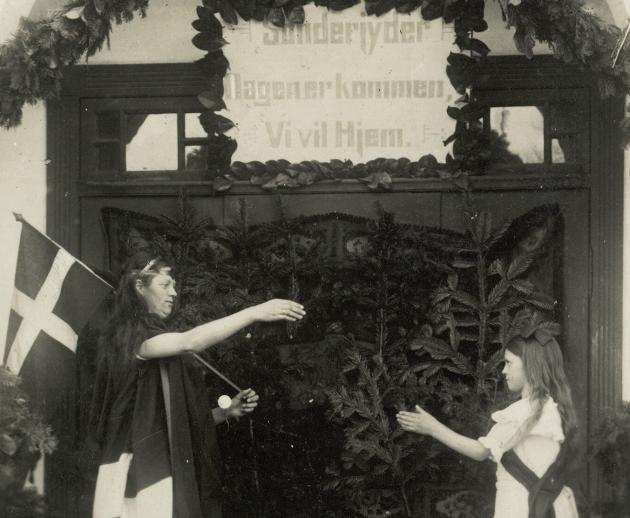
Photo: J. Boisen
Mother Denmark and the Southern Jutlandic daughter
It was not only real-life women who contributed to the reunification cause. Women as patriotic symbols appeared everywhere in imagery during the voting period, especially in the form of Mother Denmark. Mother Denmark is most often a beautiful, young woman who walks with dignity through a ripe cornfield. She has antique jewellery bound through her long golden hair, and she holds a waving Dannebrog.
In the period leading up to the vote, Mother Denmark gained a daughter. It is connected to Henrik Pontoppidan's poem "Det lyder som et eventyr..." from 1918 about the stolen daughter who returns home to her mother. It is a scene that often appeared on posters for the vote. In numerous South Jutlandic town halls, historical tableaus were arranged with women dressed as Mother Denmark receiving returned daughters. The flag symbolised the homeland, and the women performing often wore flag dresses to make the symbolism even more obvious.
The women at the ballot box
For many North Schleswigian women, the votes on reunification issues were some of the first they had participated in. This was also reflected in the campaign material, which in several cases tried to get the women's votes by talking about subjects important to them. This could for example be by explaining the benefits of the Danish school system.
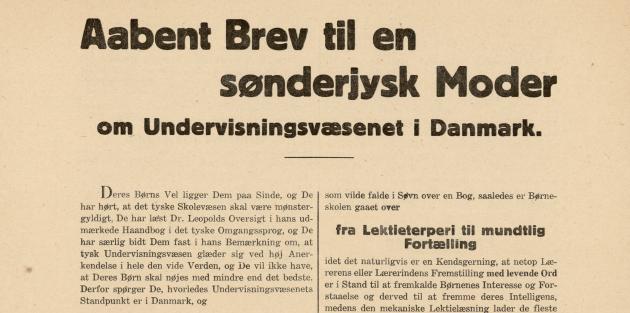
Photo: Ophav ukendt
A land of widows and single women
World War I hit North Schleswig in the late summer of 1914. The German drafts did not care about wants or mindsets, and all men aged 17-45 were sent to the war fronts. From 1916-17, the drafts were even expanded to include everyone from 16 to 60 years of age. The women were left alone, but everywhere they had to replace the drafted men. In the countryside,women had to take on full responsibility for their farms, including the work in the fields and in the stables. In the cities, women took over men's positions anywhere from the assembly line to the administration offices. It therefore became even more important for women to maintain the Danish language and Danish traditions.
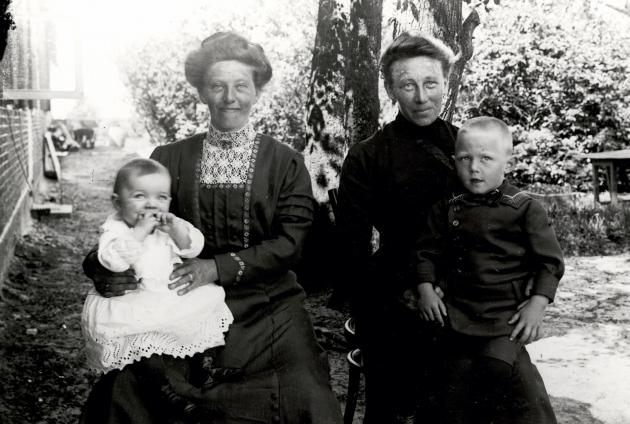
Photo: Ophav ukendt
